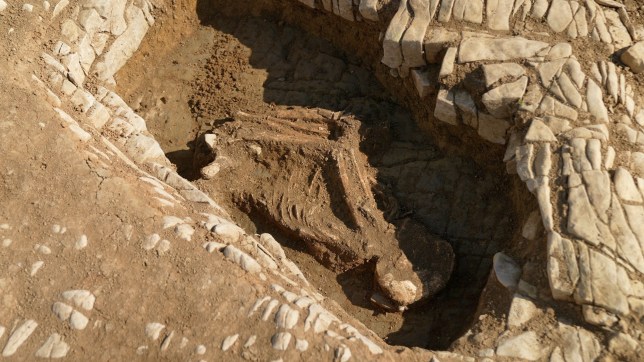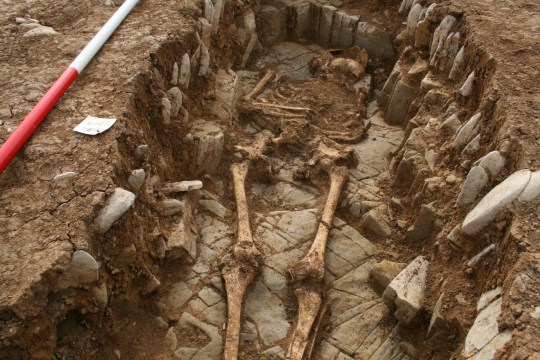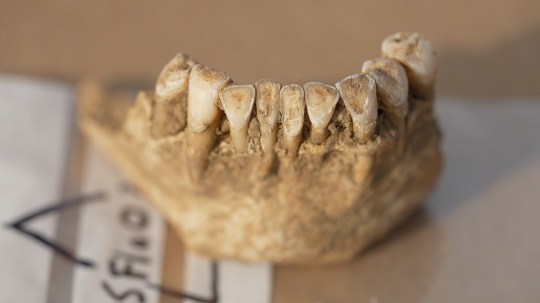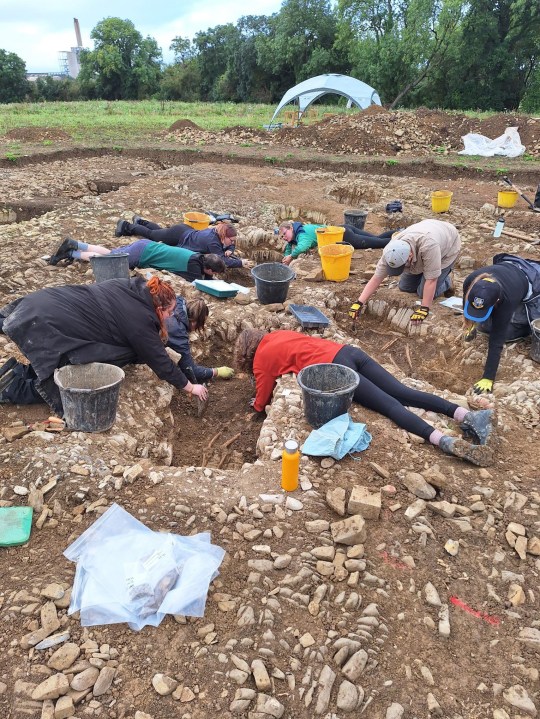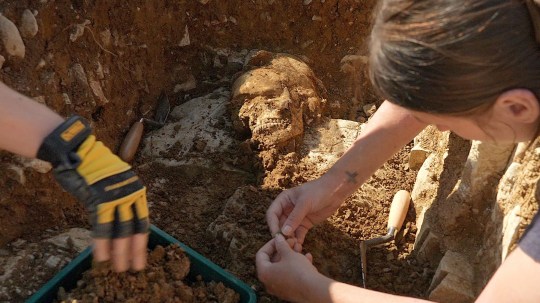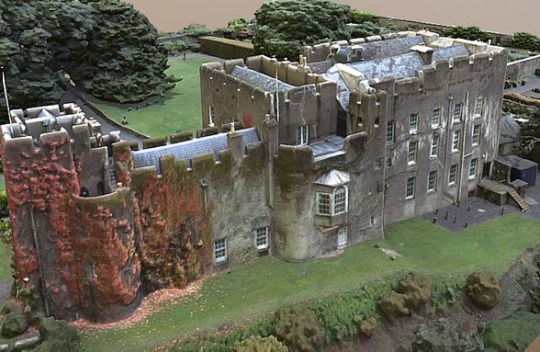A rare Medieval cemetery near Cardiff airport in Wales has unearthed many unsolved mysteries about the people who lived and died there.
Artefacts found in the soil suggest they may have socialised among the graves, eating, drinking or even feasting, while a small, round peg made of bone could be evidence of people playing games.
A team of archaeologists has spent the past two summers digging at the site, which is thought to date to the 6th or 7th century. So far, 18 of around 70 graves have been excavated – with the skeletons found raising even more questions about the community.
While some were buried lying on their back, as is common practice, others were buried on their sides – and a few were placed in a crouching position, with their knees tucked up against their chest.
The findings pose quite a head scratcher for the team, who do not know if it means the cemetery was used for a long time, during which the way they buried people changed, or if some were placed in unusual positions to mark them out as different.
The skeletons, which are in good condition, also offer an insight into how the community lived.
‘We have some teeth that are very worn in a kind of a funny way that might indicate the use of teeth as tools,’ said Summer Courts, an osteoarchaeologist from the University of Reading.
Speaking to the BBC, she said the people may have used their teeth for textile work, leather work or basketry.
‘They’re pulling something through their front teeth,’ she said.
The cemetery, which lies in the grounds of Fonmon Castle, has also revealed fragments of dishes and cups, alongside the remains of animal bones – and pottery imported from abroad.
Dr Andy Seaman, a specialist in early medieval archaeology from the University of Cardiff, says the wealth of artefacts suggests it wasn’t simply a place to bury the dead.
‘We tend to think of graveyards as sort of enclosed spaces that we don’t really go to, but they probably would have been quite central to life in the past,’ he said, speaking to the BBC.
‘And it’s not just a place for people being buried, but it’s a place where communities are coming together. They are burying their dead, but they’re also undertaking other forms of activity, and social practice, including eating and drinking – and feasting.’
It could also be that those buried in the cemetery were high status individuals, given the quality of items found among the graves – including fine glass thought to be from Bordeaux, in France.
‘The evidence we’ve got here is that the people have access to very high quality imported goods, that you can only get through trading or exchange networks, with people with a lot of wealth, to bring it here,’ said Dr Tudur Davies, from the University of Cardiff.
‘What exactly is going on? Who are these people being buried here?’
Those are the questions asked in tomorrow’s episode of Digging For Britain on BBC at 8pm, which will feature the cemetery.
Further DNA analysis will also be carried out to learn more about who exactly was buried there, and when.
MORE : Surprising find proves rainy British city was once the centre of the Roman Empire
MORE : Archaeologists stumble across 5,000-year-old ‘family crypt’ Victorians tried to destroy
MORE : Mystery of frozen cemetery full of empty graves is finally solved
Follow Metro across our social channels, on Facebook, Twitter and Instagram
Share your views in the comments below
Get your need-to-know
latest news, feel-good stories, analysis and more
This site is protected by reCAPTCHA and the Google Privacy Policy and Terms of Service apply.

